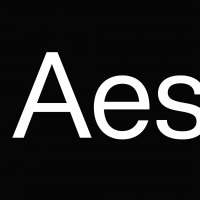Is there a need for a TTF version?
Options

AbiRasheed
Posts: 245
I have a hard time with TTF because it's quadratic so I've totally skipped it for now and stuck with OTF only. I have tried the auto conversion from OTF to TTF, aside from it generating a ton of nodes, I figured the only way for it to look right was to manually clean it up to have fewer nodes, another reason why I skipped a TTF version. I'm not sure if fewer nodes is better for TTF or if an autoconversion is good enough, but the whole quadratic thing just made it difficult since I wasn't used to it. So are there any use cases where TTF is an absolute must that an OTF won't suffice or can I stick to just an OTF? Only thing I can think of is hinting but aside from hinting anything else?
Cheers!
Cheers!
Tagged:
0
Comments
-
TTF can share glyph as components, while subroutinization is both hard and unreliable.1
-
What tool do you use to convert from cubic to quadratic?
You can get much better screen rendering with hinted TrueType on windows. Mac and mobile (iOS and Android) are fine with OT.
1 -
There's also the practical matter of consumer preference. Whether through habit, ignorance or actual necessity, some people just prefer TrueType fonts. So if you're aiming for widespread usage or maximized sales, ignoring TrueType might very well limit your audience.1
-
The user and all related content has been deleted.2
-
Some game engines can only handle TTF. GameMaker: Studio is TTF only. Unreal, Godot and Unity can handle OTFs. I think CryEngine, Project Anarchy, Hero Engine and Rage Engine are TTF only.9
-
Yes. And a better thing that you can precisely control how the outline should be moved to fit the screen in TT, while the hinting mechanism of CFF is, well, uncontrollable.Georg Seifert said:What tool do you use to convert from cubic to quadratic?
You can get much better screen rendering with hinted TrueType on windows. Mac and mobile (iOS and Android) are fine with OT.1 -
@Georg Seifert im just doing it right in FLS, when I meant quadratic I meant generating TTF.
@Terminal Design just artsy type I guess, display?
@Ray Larabie right, that makes sense.
@Cory Maylett Ah yeah more choices the better I guess.0 -
just artsy type I guess, display?
I think he means artsy people.2 -
Belleve Invis said:
"uncontrollable" isn't quite the right word - 'advisory' is more like it.
Yes. And a better thing that you can precisely control how the outline should be moved to fit the screen in TT, while the hinting mechanism of CFF is, well, uncontrollable.Georg Seifert said:What tool do you use to convert from cubic to quadratic?
You can get much better screen rendering with hinted TrueType on windows. Mac and mobile (iOS and Android) are fine with OT.
cubic to quadratic requires some hackery (all quadratics are cubics, but not all cubics are quadratics).
There are some intrinsic differences between the two kinds of font technologies (and rendering requirements), mainly in those two areas. It is not convenient for font designers to make two versions, but that's a reality to use either technology to the full...1 -
TTF because Microsoft2
-
The user and all related content has been deleted.3
-
Not sure about Android or Linux, but if you want to cater to Windows, TT is still a must. There are still many (Windows) apps around that require TTFs and expect certain TT tables them. Especially when it comes to more complex outlines or large-volume type, TTFs render much faster and more reliably on Windows.
1 -
Ah okay @Mark. @Terminal Design I'm not targeting any market per se, I think if anything it's just going to be stuff to use as display so maybe just graphic designers and the likes. But thanks for all the info everyone, I think I've gotten a brief idea of how this works and should read up a bit more. Hadn't even heard of CFF or subroutinization until you guys mentioned it so I think i need to read and might have to learn to draw TTF I guess. Cheers!0
-
CFF means OpenType with PostScript outlines and hinting. Usually, .otf = CFF and .ttf = TTF. Technically, .otf could also = TTF, but nobody does this. OpenType is an extension to TrueType with some extra tables and the option to use PostScript outlines (CFF).3
-
Also, for what it's worth, very few type designers draw TTF curves. Although it is possible, most go with some kind of automatic conversion from PS curves, which is usually acceptable.4
-
Do very many people actually draw (or correct) their TTFs in quadratics? Don’t most folks just learn to avoid constructions that don’t convert well, convert at time of compilation, cross their fingers, and let it go?
(Unless you’re specifically working on specialized screen fonts, perhaps.)
3 -
The user and all related content has been deleted.5
-
I used to draw my fonts using quadratic curves because quadratic to cubic conversion is lossless (unlike the other way around), I know draw using cubic curves and I don’t find it any simpler.
1 -
James — To be clear, though, are you editing the TT off-curve points directly? Or are you just checking the PS to see that they convert well, and if not, revising the PS until they do? The latter makes sense to me. Working directly with TT points, on the other hand, always feels like playing cat's cradle and ending up with a tangled mess.
1 -
The user and all related content has been deleted.1
-
@Kent Lew
Sometimes when I make fonts with small rounded corners, I go in quadratic (TT) mode and manually set each corner to a single curve point. Normally, it's not a problem but when corners are only 4-10 units in size, they can get messed up when converting to PS curves and back. When making obliques, sometimes I'll slant as TT curves and convert back to PS curves. When I'm dealing with small rounded corners, there's no such thing as lossless. I just try to do it in a way that causes the least amount of conversion damage.3 -
Useful perspective. Thanks.
1 -
Oh okay that's good to know then Mark. I've been doing just that, an autoconversion, but the thing is it looks weird, ends up with a ton of nodes & also seems to mess up some of the curves. [link] to an example, is ttf doing this because the original PS outlines are just bad or is this normal if you do an autoconversion? I tried @Terminal's approach too but after you set curves to truetype, makes it very difficult to clean it up with so many points. @Ray yeah I've noticed that for smaller curves too.0
-
-
Are there any other type designers that are frustrated with the complexity, cost, and time required to deal with TT hinting? I never realized until this thread the problems that can occur with PS to TT outline conversions. Is it wrong to blame Bill Gates for all of this? lol1
-
It is intelligent font + dumb rendering vs dumb font + intelligent rendering (sort of). So in a way, yes. Instead of getting the display system to move and shift the curves intelligently, Bill Gates offload the responsibility of font looking nice on all resolution to the font designer.
Maybe not entirely Bill's fault - Apple was in it as well, and Adobe could be blamed for withholding the rendering of postscript in the type manager, and not license it cheaply also...2 -
The funny thing is, while Apple developed the TrueType format and still uses it, it abandoned relying on instructions with OS X around 15 years ago. Basically, it took more of the Adobe approach, utilizing a smart rasterizer instead of relying on smarts in the fonts (which are rarely smart enough anyway, outside of system fonts). As far as I can tell, it does use alignment zones.
At first, it wasn't that great, but over the years it has gotten better and better. And now with retina screens, it rivals the printed page in terms of sharpness.
I really prefer the smart rasterizer strategy, not only because it means less work for me, but also because it eliminates a huge bottleneck. If a new screen technology comes along, with the dumb rasterizer strategy, potentially all existing fonts must be updated since they have been individually optimized to work with the older screen technology. With a smart rasterizer, existing fonts should work fine as is.
Obviously there are trade offs, especially on low to medium res screens. But I think as screens get better and better, the dumb rasterizer strategy seems to make less and less sense.6 -
Microsoft products have been the bane of my existence for my entire adult life. It’s not just TT hints. I can’t think of any entity on Earth I’d rather see go down in flames. I’d gladly vote for Trump if he promised to nuke Redmond.Michael Jarboe said:Are there any other type designers that are frustrated with the complexity, cost, and time required to deal with TT hinting?
Agreed. Microsoft’s text rendering strategies seem to revolve around the fonts that ship with the OS and Office. And to make matters worse Microsoft enabled software developers live in their own typographic universes, altering the behavior of Directwrite, so fonts instructed for Windows end up looking different in individual applications.Mark Simonson said:I really prefer the smart rasterizer strategy, not only because it means less work for me, but also because it eliminates a huge bottleneck. If a new screen technology comes along, with the dumb rasterizer strategy, potentially all existing fonts must be updated since they have been individually optimized to work with the older screen technology. With a smart rasterizer, existing fonts should work fine as is.4 -
No, at the end of the day you can't reliably precisely control the outline in that way—not across operating systems.Belleve Invis said:
Yes. And a better thing that you can precisely control how the outline should be moved to fit the screen in TT, while the hinting mechanism of CFF is, well, uncontrollable.Georg Seifert said:What tool do you use to convert from cubic to quadratic?
You can get much better screen rendering with hinted TrueType on windows. Mac and mobile (iOS and Android) are fine with OT.1 -
there are some great tools for Hinting TTF fonts for todays rendering environments. VTT, and TTFAutohint, for adding hinting. If you dont want hinting, you can set the GASP table to ignore hinting and use y-direction smoothing, which results in font rendering very similar to how it looks on OSX for instance.4
Categories
- All Categories
- 46 Introductions
- 3.8K Typeface Design
- 478 Type Design Critiques
- 556 Type Design Software
- 1.1K Type Design Technique & Theory
- 641 Type Business
- 832 Font Technology
- 29 Punchcutting
- 510 Typography
- 120 Type Education
- 315 Type History
- 75 Type Resources
- 109 Lettering and Calligraphy
- 30 Lettering Critiques
- 79 Lettering Technique & Theory
- 533 Announcements
- 86 Events
- 110 Job Postings
- 167 Type Releases
- 169 Miscellaneous News
- 274 About TypeDrawers
- 53 TypeDrawers Announcements
- 119 Suggestions and Bug Reports










